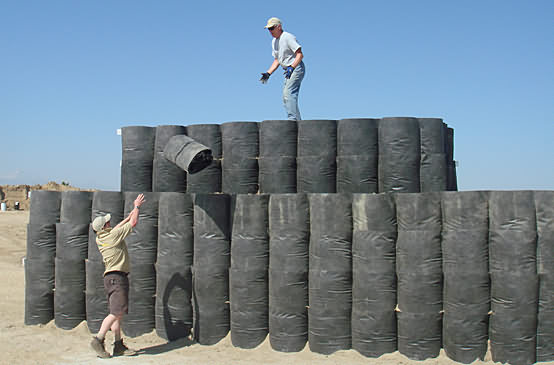DefenCell: Advantages
DefenCell vs Gabion Walls
Wire mesh gabion walls make up over 40% of the force protection defensive structures found in Iraq and Afghanistan. Similar in design to DefenCell, these gabions walls offer ballistics and explosion protection while requiring only minimal training and resources.
Wire mesh gabions were originally developed for flood protection and later used as force protection systems. As a result, most steel mesh gabions retained their metal-based mounting hardware when making the transition to military use. This wire mesh poses a risk of secondary fragmentation, RF interference, and thermal interference when used in combat operations.
Wire mesh gabions have saved countless lives, but the 20 year old design leaves room for improvement. DefenCell offers similar blast protection without the need for metal or plastic hardware.
DefenCell requires a smaller logistical footprint; one container of DefenCell provides equivalent force protection of 5 containers of standard wire mesh gabions. DefenCell is also man portable - meaning that it can easily be carried by rucksack for expedient force protection in remote locations without the need for special equipment.
DefenCell can also complement existing force protection systems DefenCell can be used for interior walls, tent compartmentalization, containerized housing units (CHUs), and critical asset protection alongside larger gabion perimeter walls. Defencell will not only save space, but reduce the risk of secondary fragmentation when used in close proximity to soldiers and sensitive items.
